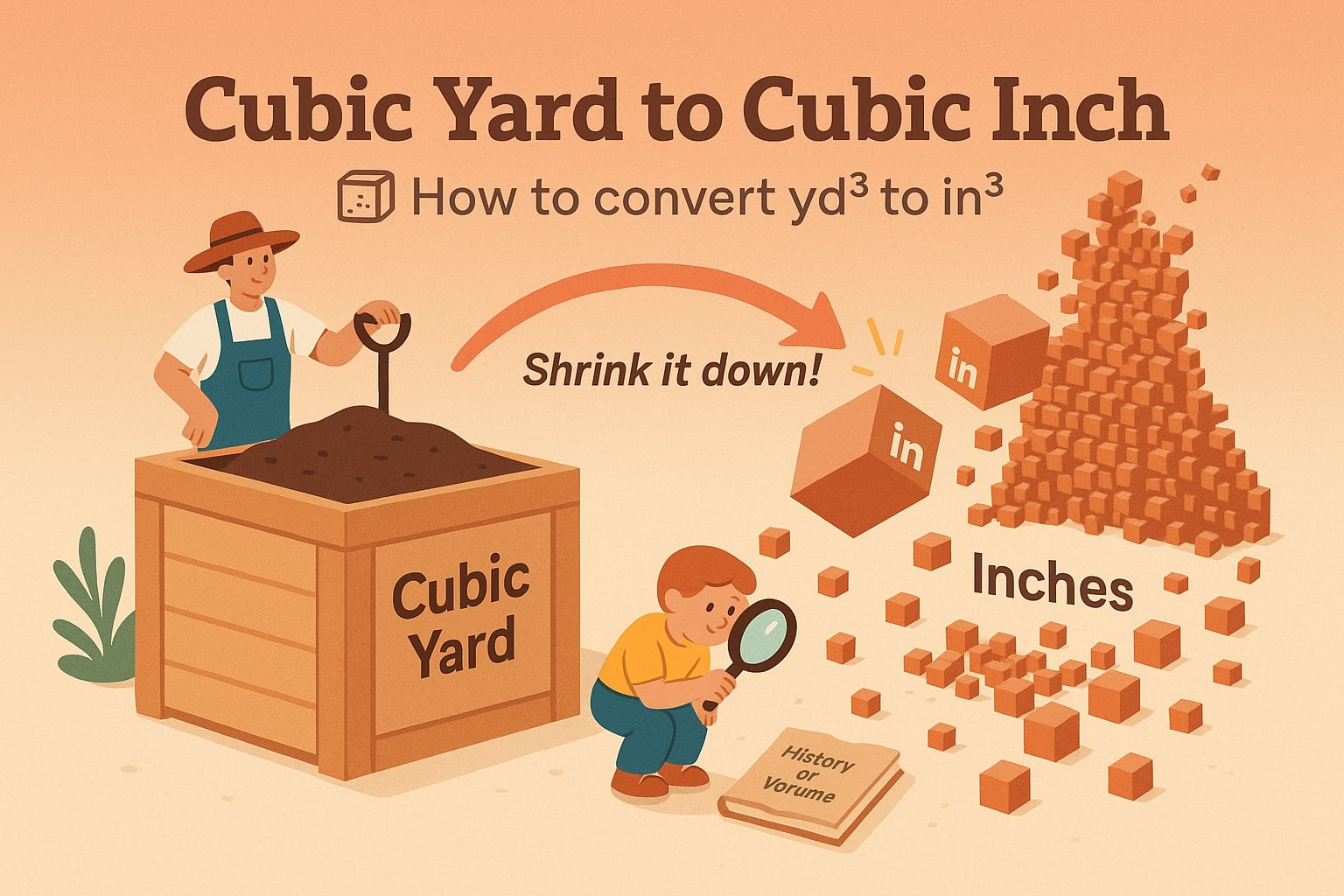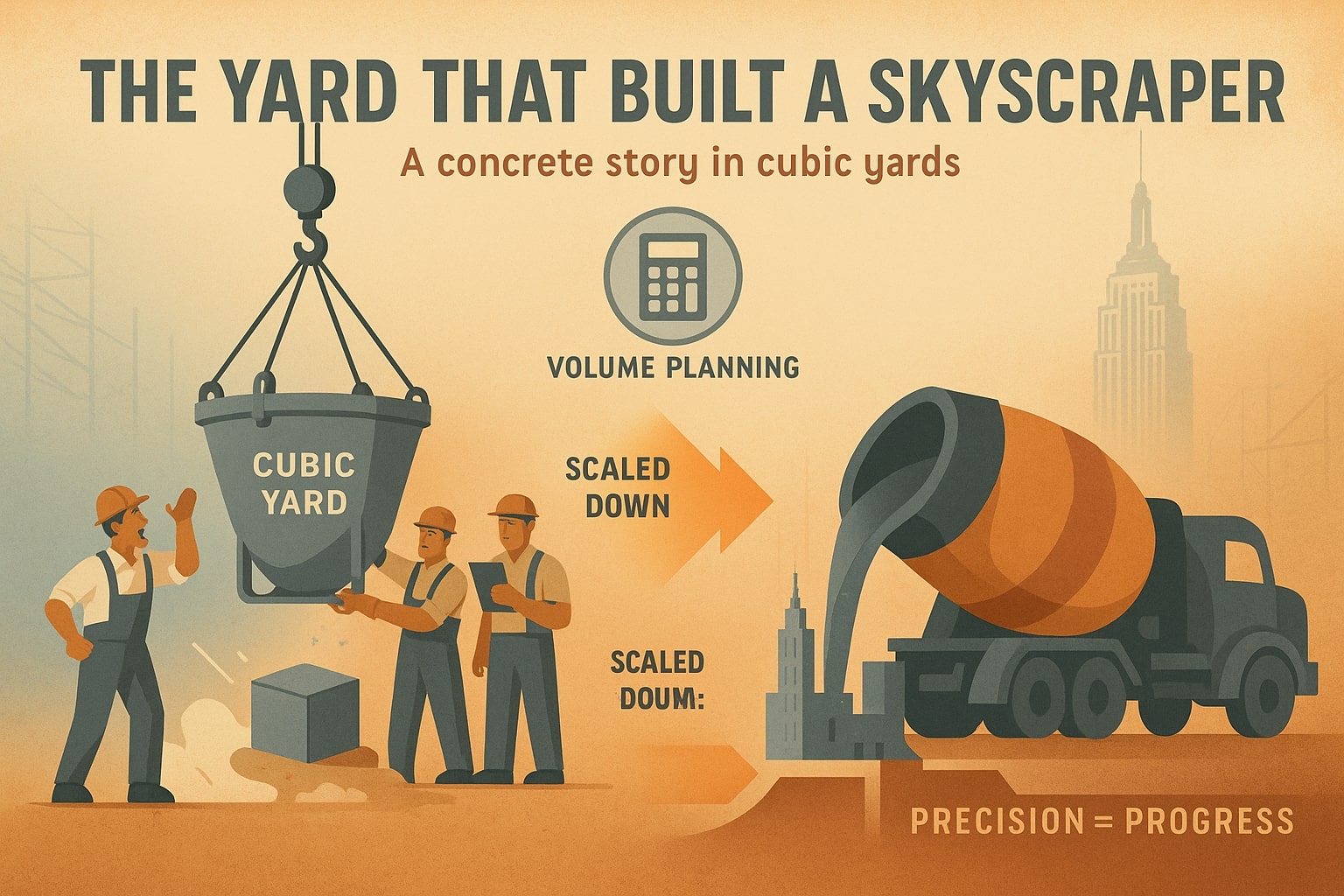Cubic Yard to Cubic Inch – How to convert yd³ to in³
Ever wondered how to translate cubic yard to cubic inch measurements? Whether you’re dealing with soil for landscaping, mixing concrete, or just curious about how massive a yard of volume can be in inches, Jetcalculator helps you convert it easily. Below, we’ll explain the math, reveal some surprising facts about these two units, and even share a story from history that shows just how useful this conversion can be.

What is a cubic yard (yd³)?
A cubic yard (yd³) is a volume measurement representing a cube that’s one yard (3 feet) on each side. That’s 27 cubic feet or 46,656 cubic inches.
Cubic yards are common in construction, gardening, and bulk materials like mulch, gravel, or cement. If you’ve ever ordered soil or concrete for a project, chances are you’ve seen prices by the cubic yard. It’s the go-to unit for estimating bulk quantities.
What is a cubic inch (in³)?
A cubic inch (in³) is a much smaller volume measurement, literally the space inside a cube one inch on each side. It’s used in engineering, engine specifications, and small-scale measurements.
To give you a sense of scale, there are 46,656 cubic inches in one cubic yard. That’s why converting between the two is essential when you need precise measurements, especially for things like shipping, custom builds, or mechanical work.
How to convert cubic yard to cubic inch
Here’s the straightforward formula:
1 cubic yard = 46,656 cubic inches
To convert:
Cubic Inches (in³) = Cubic Yards (yd³) × 46,656
Example: If you have 2 cubic yards of soil:
2 yd³ × 46,656 = 93,312 in³
Want to skip the math? Use our Volume Converter or explore other handy Conversion tools to make it instant.
Did you know?
-
The average backyard swimming pool in the U.S. holds around 20 cubic yards of water, which equals about 933,120 cubic inches — imagine counting that out one inch at a time!
-
The Statue of Liberty’s pedestal contains over 27,000 cubic yards of concrete, or roughly 1.26 billion cubic inches of material.
-
The legendary Shelby Cobra 427 engine was famous for its 427 cubic inch displacement, making it one of the most powerful cars of the 1960s.
-
A standard NBA basketball is about 455 cubic inches in volume, meaning one cubic yard could hold over 100 basketballs packed together.
The Yard That Built a Skyscraper
In the 1930s, as the Empire State Building rose over New York City, engineers faced a massive challenge: moving and pouring concrete at record speeds. According to accounts in the New York Daily News archives, workers handled over 62,000 cubic yards of concrete during construction. That’s more than 2.8 billion cubic inches of material carefully measured and delivered.
Using precise volume conversions, including cubic yards to cubic inches, allowed engineers to calculate everything from mix proportions to how many trucks were needed each day. This attention to volume math helped the project finish ahead of schedule — an extraordinary feat during the Great Depression.

Wrapping It Up
Converting cubic yard to cubic inch is all about multiplying by 46,656. Whether you’re planning a project, comparing engine specs, or just curious about how big a “yard” really is when broken down to inches, this conversion helps keep everything accurate.
For quick results without the calculator, use our Volume Converter or check out other Conversion tools to make every conversion fast and simple.

